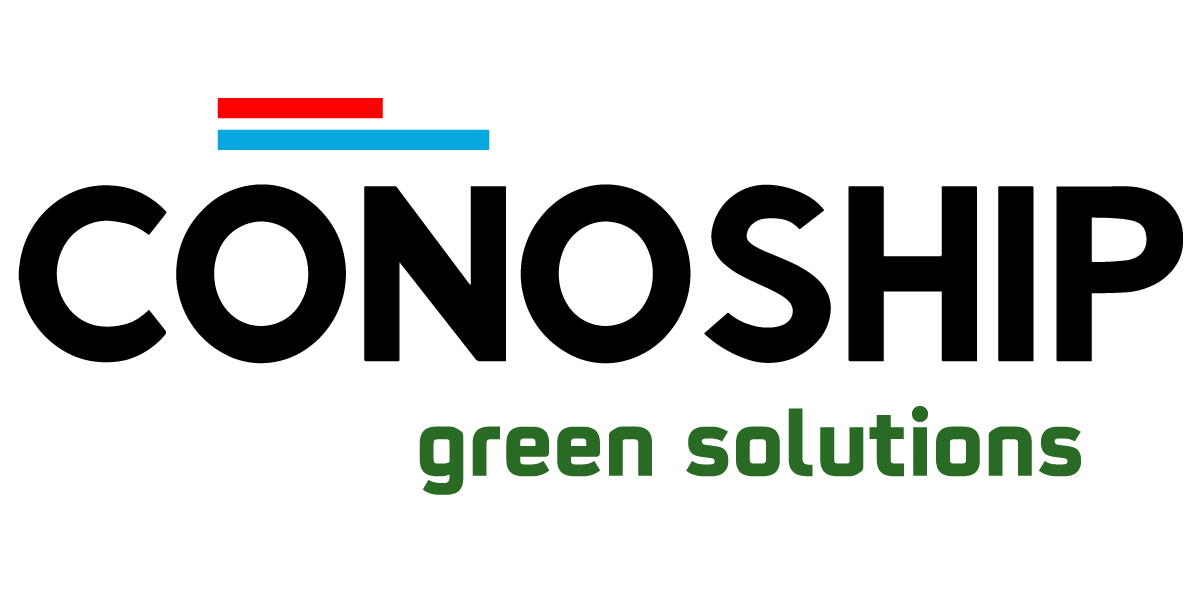So many solutions,
but what to choose?
Don’t worry,
we know the way
We know the impact of the technical solutions and how to translate these into design and construction. For every ship, it is therefore important to look at which mix of emission-reducing solutions is the best. Together with you, we determine how we can combine the hull shape, propulsion, resources and (optional) fuels and energy supply into an economically and ecologically sound mix.
‘The answer is
blowing in the wind’
The transition to zero-emission starts with better utilization of the natural “fuel” wind.
Wind is the ideal resource. It is freely available and can contribute effectively to propulsion. With the eConowind-unit, we developed an easy-to-mount unit to enable wind assisted propulsion for existing and new cargo ships. This system has won the Maritime Innovation Award 2019 and several ships are now sailing with it, achieving fuel savings of 20 to even 50%.
Wind assisted
propulsion
Reduce propulsion power,
reduce emissions
- Reduce fuel consumption and emissions with 10 to 20%
- Proven solution, in operation on growing number of cargo ships
- Movable or foldable system, to avoid hindering of cargo operations
- Modular system; suited for newbuilding’s as well as retro-fits.
- Small to large size (cargo) vessels
- Medium to long range sailing distances
‘Smoke on the water’
Reduce emissions to less than 30% with LNG and Ship Based Carbon Capture (SBCC)
LNG is currently the best fuel alternative to diesel. Its use reduces harmful emissions due to lower emissions of carbon dioxide (CO2) and nitrogen oxide (NOx) and the absence of sulfur oxides (SOx) and particulate matter (PM).
By adding a Ship Based Carbon Capture System to capture the CO2 in the exhaust gasses, the shipboard CO2-emissions can be reduced to almost zero. The captured CO2 can be cooled and stored on board. Onshore, it can be reused to produce synthetic methane. A promising step towards a closed carbon loop.
LNG-CO2 capture
Reduce diesel,
reduce emissions
- Reduce emissions with 15 to 85%.
- Proven land-based solution.
- Modular system; suited for newbuilding’s as well as retro-fits
- Competitive cost levels due to attractive CO2 prices
- Small to large size (cargo) vessels
- Medium to long range sailing distances
‘Keep it flexible’
Having a dual fuel engine gives flexibility in fuel use during the vessel’s lifetime.
Technically, it is possible to make the step from LNG-powered ships to hydrogen (H2). Making a duel fuel engine an excellent replacement engine for the coming decades. It gives flexibility in fuel use depending on availability and can, in favorable conditions, result in a CO2 emission reduction of 75%. Green produced H2 would be emission-free and would result in a closed carbon loop.
H2-dual fuel
Reduce diesel,
reduce emission
- CO2 emissions reduced with 75% compared to diesel powered
- Systems available, no prototypes
- Solutions based on a H2-diesel dual fuel engine. Direct Drive
- Flexibility in fuel, also possible to run on diesel
- Small to medium size (cargo) vessels.
- Short to medium range sailing distances
‘Let’s go green’
A closed carbon loop can be realized with “green” non-fossil fuels.
Methanol is an easy to use fuel and, even when injected in small percentages in combustion engines, gives a considerable reduction in emissions. Storage does not require pressure vessels or cooling, since it’s just a liquid.
The ample availability of grey methanol assures the possibility to operate around the world, while the share of bio- or blue methanol can be gradually increased as production is rapidly increasing. This makes methanol an equally good transition fuel as LNG.
Bio-methanol
powered
Reduce diesel,
reduce emissions
- By using bio-methanol net emissions are near zero
- Direct Driven or Electric drive:
- Methanol-diesel dual fuel direct drive
- Electric propulsion train, with multiple methanol single fuel generator sets
- A limited effect on vessel arrangement, required volume and weight
- Small to medium size (cargo) vessels
- Medium to long range sailing distances
‘Plug ‘n play’
The full transition to zero-emission at sea requires electric storage on board.
To enable electricity on board, we use a battery where energy is stored in liquid form: the Redox flow battery. It’s a safe and 100% emission-free technique which does not depreciate during its lifetime. All energy in the battery can be used for propulsion of the ship.
The effectiveness and environmental benefits of this solution are enhanced because the battery contributes to the ship’s ballast, rather than the current water ballast systems.
Full electric
propulsion
Replace diesel,
eliminate emissions
- 100% zero emission at sea
- Redox flow battery powered
- High overall energy efficiency
- Modular system; suited for newbuilding’s as well as retro-fits
- Small to medium size (cargo) vessels
- Short to medium range sailing distances
‘The future is
modular’
Design with easy conversion in mind and become future fuel ready today.
Fuel innovations will continue to follow one another in the coming years, even during the economic lifetime of a ship. Modular thinking, adaptive engine design and construction makes it possible for the vessel to remain viable during its life cycle. Emission reductions during the lifetime can be accelerated if combinations of successive possibilities are taken into account in each new design.
Future Fuel
ready
Forward compatible,
reduce emissions
- Smart arrangement design makes conversion to other fuels easy.
- Start operations as Diesel-Electric vessel, later convert to:
Methanol, Ammonia, or Hydrogen - Modern, fuel-efficient design from the start, reducing consumption and emission figures compared to current vessels from day 1.
- Postpone the decision about which fuel to use, by building a future proof vessel
- Small to medium size (cargo) vessels
- Medium to long range sailing distances
